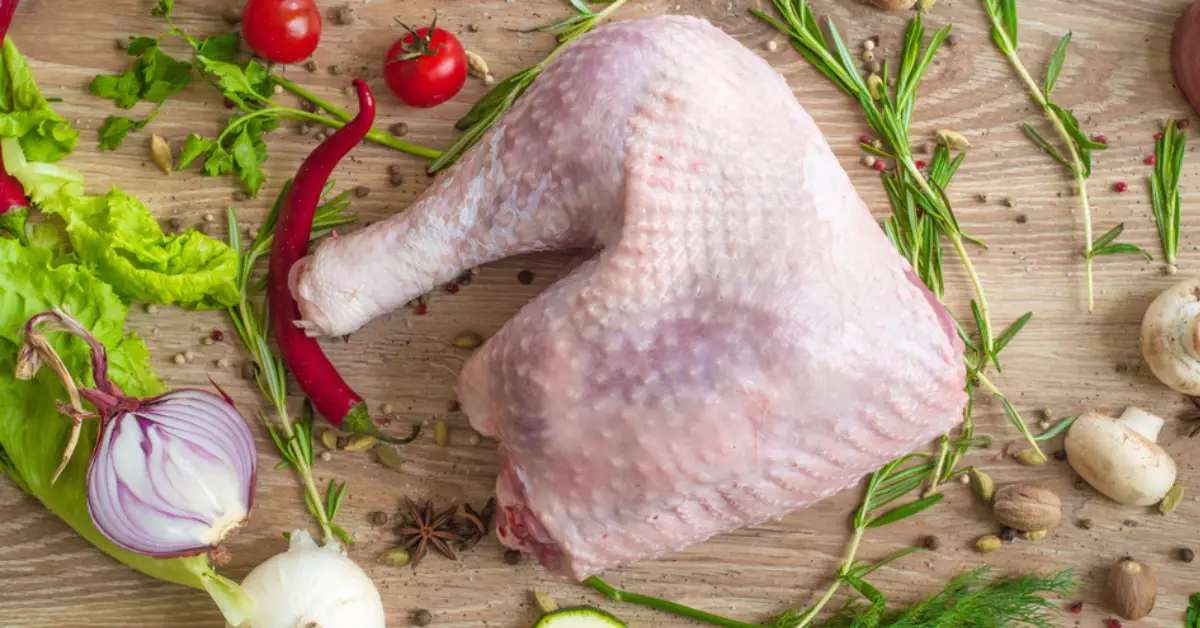A succulent, juicy turkey leg is an emblem of sumptuous holiday meals. The art of preparing turkey isn’t merely about the recipe, but it’s also about understanding the meat itself. And one key element to pay attention to is the tendons within turkey legs.
Tendons in the turkey legs can make the difference between a tender, melt-in-the-mouth experience and a challenging, chewy bite. Learning to remove these tendons properly will ensure that your culinary endeavors result in the most tender and delicious turkey legs.
Paying attention to such details as tendon removal is what distinguishes a good cook from a great one. Not only does it improve the texture and taste of your turkey legs, but it also adds a professional touch to your cooking.
Anatomy of a Turkey Leg
Basic Structure of a Turkey Leg
To tackle tendon removal, it’s useful to familiarize yourself with the basic anatomy of a turkey leg. The leg consists of two main parts: the thigh and the drumstick. The drumstick houses several tough, white tendons that can become particularly chewy when cooked.
What are Tendons in a Turkey Leg?
Tendons are tough, flexible bands of fibrous tissue that connect muscles to bones. In a turkey leg, they primarily run along the length of the drumstick, connecting the meat to the lower bone. They appear as white, rubbery strands that retain their toughness even after prolonged cooking.
Why Remove Tendons From Turkey Legs?
Role of Tendons in Turkey Legs
Tendons play an essential role in the function of a turkey’s legs, providing strength and flexibility. However, their durability makes them resistant to heat, meaning they don’t soften significantly during cooking.
Consequences of Leaving Tendons in While Cooking
Leaving the tendons in while cooking can result in a less desirable texture. Your knife or teeth have to fight through the tough, chewy tendons, making the eating experience less enjoyable. Removing them beforehand results in more tender and easier-to-eat turkey legs.
Step-by-Step Guide to Removing Tendons from Turkey Legs
Removal of tendons from turkey legs might seem like a daunting task, but it is quite achievable with some patience and the right technique. To simplify this process, we’ve broken it down into a step-by-step guide.
Tools You Need for the Process
Before starting, make sure you have the right tools. Trying to remove tendons without appropriate equipment can be frustrating and might lead to injury. Here’s a quick list of items you need:
- A Clean Cutting Board: Having a sturdy and clean surface to work on is essential. The cutting board provides a stable platform, ensuring that the turkey leg doesn’t slip while you’re working on it.
- A Sharp Knife: This is critical for making precise cuts and exposing the tendons. A sharp knife is not only safer, but it also allows for more control during the process.
- A Pair of Clean Pliers: They might seem out of place in a cooking scenario, but pliers are actually quite handy for tendon removal. They provide a good grip, making it easier to pull out the tendons.
How to Locate the Tendons
Identifying the tendons in a turkey leg is the first step towards their removal. They are typically located in the drumstick portion of the leg, running along the length of the meat. Follow these steps to locate them:
- Place the turkey leg on the cutting board with the meatier side facing up.
- Cut a small portion from the bottom end of the drumstick. This will expose the ends of the tendons.
- Look for white, fibrous strands. These are the tendons you want to remove.
Correct Method to Pull Out the Tendons
Once you’ve located the tendons, the next step is to pull them out. This process requires care and patience to ensure you don’t damage the meat. Here’s how to do it:
- Grip the end of a tendon using the pliers. Ensure you have a firm hold.
- Pull the tendon gently but firmly, following the direction of the muscle fibers. If done correctly, the tendon should slide out without resistance.
- Repeat this process for each visible tendon.
Expert Tips for Removing Turkey Tendons
Knowing the basics is good, but a few expert tips can make the task even easier and more efficient. Here are some best practices and things to avoid during tendon removal:
Best Practices for Easier Tendon Removal
- Thaw the Turkey Leg: Always work with a completely thawed turkey leg. Frozen or partially frozen tendons can be difficult to grip and remove.
- Take Your Time: Rushing the process can lead to incomplete tendon removal or damaged meat. Patience pays off!
- Check for Small Tendons: Not all tendons are large and clearly visible. Feel around the meat for any small, hidden tendons.
What to Avoid During Tendon Removal
- Avoid Forceful Pulls: Tendons should be removed gently. A forceful pull can tear the meat.
- Don’t Leave Tendon Fragments Behind: Any remnants of tendons left in the meat can turn tough and chewy after cooking.
- Avoid Using Blunt Tools: Sharp, clean tools make the process easier and safer.
Cooking Without Tendons: The Difference it Makes
Cooking turkey legs without tendons can significantly impact both the cooking process and the final results.
How Tendon Removal Impacts Cooking Time
With the tough tendons removed, heat can more evenly penetrate the meat, potentially reducing the cooking time. Here are some points to note:
- Monitor Your Cooking: Since tendons-free turkey legs can cook faster, it’s important to monitor your cooking time to avoid overcooking the meat.
- Use a Meat Thermometer: A reliable way to check the doneness of your turkey legs is to use a meat thermometer. The internal temperature should reach 165°F (74°C) at the thickest part of the leg.
Changes in Texture and Taste
One of the most noticeable changes after removing tendons is in the texture and taste of the turkey legs:
- Improved Texture: The meat becomes softer and more tender, enhancing the eating experience.
- Better Flavor Absorption: Without the dense tendons, the meat can absorb marinades and spices more evenly, leading to a richer flavor profile.
Frequently Asked Questions
Can I leave the tendons in my turkey legs?
While you can leave the tendons in, removing them results in a more tender and enjoyable eating experience.
Do all turkey legs have tendons?
Yes, all turkey legs contain tendons. However, the number and thickness of these tendons can vary.
Can I remove the tendons after cooking the turkey legs?
It’s possible but challenging to remove the tendons post-cooking. Therefore, it’s best to remove them prior to cooking.
Conclusion
The art of cooking lies in the details. Something as simple as removing the tendons from your turkey legs can significantly enhance the eating experience. It’s a testament to the care and thoughtfulness you bring to your cooking.
As with many skills, tendon removal may seem daunting at first. But with practice, it becomes easier and quicker, well worth the effort for the benefits it brings. This simple trick can elevate your turkey dishes, whether they’re for a holiday meal or a family dinner.
Even as you follow recipes to the letter, remember that understanding the food you’re working with is vital. With this newfound knowledge on turkey leg tendons and how to remove them, you’re well on your way to becoming a more skilled and attentive cook. The rewards are tastier, more tender turkey legs that will have your diners coming back for seconds and thirds. Happy cooking!







